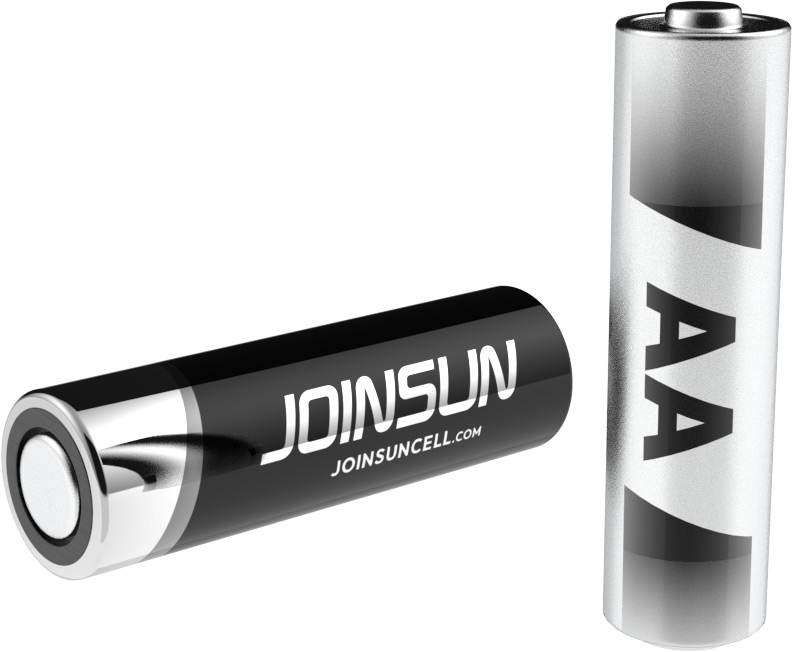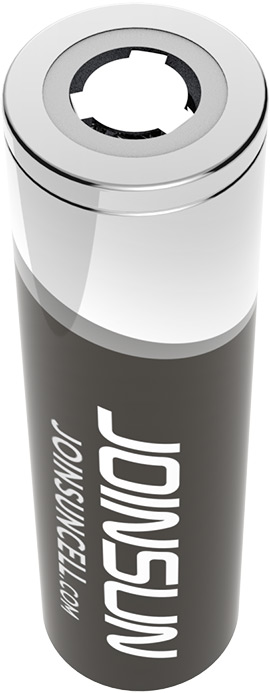18650 VS AA Battery
Blog | Published by Alex on October 22, 2025

The Battle of the Century: 18650 vs AA
In modern electronic devices and energy storage systems, 18650 battery and AA (LR6/5#) battery are among the most common battery types. Although they differ in size and chemical composition, both play important roles in their respective domains. Understanding their performance differences and application characteristics is crucial for battery selection, electronic product design, and user experience.
The 18650 battery is a cylindrical lithium-ion battery, named after its dimensions: 18mm in diameter and 65mm in length. It is widely used in power banks, power tools, electric vehicles, ebikes, self-balancing scooters, and energy storage systems.
The AA battery is a standard-size battery, commonly available in alkaline, nickel-metal hydride (NiMH), or lithium chemistries. It is mainly used in small household electronics such as remote controls, flashlights, and electronic toys.
18650 and AA, Size and Capacity Comparison
| Parameters |
18650 Battery |
AA Battery |
| Dimensions |
18 × 65 mm |
14.5 × 50.5 mm |
| Nominal Voltage |
3.6–3.7V |
1.2–1.5V |
| Capacity |
1800–3600 mAh |
600–2800 mAh (NiMH up to 2500 mAh) |
| Energy Density |
200–260 Wh/kg |
100–120 Wh/kg |
In terms of size and capacity, the 18650 battery has slightly larger dimensions but significantly higher capacity and energy density than AA battery. This makes 18650 battery ideal for high-power, high-capacity applications, while AA batteries excel in portability and easy replacement.
AA vs 18650, Chemistry and Performance Characteristics
18650 Battery (Lithium-ion)
18650 battery usually use lithium-ion chemistries, including NCM/NCA (Nickel Cobalt Manganese/Nickel Cobalt Aluminum) and LiFePO4 LFP (Lithium Iron Phosphate). Key characteristics include:
(1) High energy density: Compact yet high capacity.
(2) High discharge rate: Suitable for power tools and electric vehicles.
(3) Long cycle life: LiFePO4 LFP: 800–1500 cycles, NCM/NCA: 500–1000 cycles.
(4) Low self-discharge: Approximately 2–3% per month at room temperature.
AA Battery
AA battery come in multiple chemistries:
(1) Alkaline: 1.5V, 2000–2800mAh, disposable, suitable for low-power devices.
(2) NiMH: 1.2V, 2000–2500mAh, rechargeable, 500–1000 cycles, higher self-discharge.
(3) Lithium (AA/CR): 1.5V–3.2V, high instantaneous discharge, higher cost.
In general, AA battery is suitable for low-power or disposable applications, whereas 18650 battery is more efficient for high-power, continuous-use scenarios.
AA and 18650, Application Scenarios
18650 Battery
18650 battery excel in high-energy-demand devices:
(1) Power Banks/Portable Power Stations: 18650 providing long-lasting power.
(2) Power Tools/Electric Garden Tools: High discharge rate meets instantaneous power requirements for drills, saws, etc.
(3) Electric Vehicles/E-Scooters/E-Bikes/Ride On Car: Multiple 18650 battery form battery packs for propulsion systems.
(4) High-end Flashlights: Support prolonged high-brightness output.
AA Battery
AA batteries are used in portable, low-power devices:
(1) Remote Controls and Mice: Low current draw, long standby time.
(2) Small Electronic Toys: Disposable or rechargeable, easy replacement.
(3) Small Flashlights: Low capacity but portable.
(4) Clocks and Sensors: Small size, low-power requirements.
In short, 18650 is suited for high-power, high-capacity scenarios, while AA batteries are favored for portability, universal availability, and cost-effectiveness.
18650 or AA Battery, Charging and Maintenance
18650 Battery (Lithium)
(1) Requires dedicated lithium battery chargers.
(2) Charging voltage strictly limited to ~4.2V, overcharge/over-discharge can damage the battery.
(3) Temperature management is critical during charging.
(4) Often used in battery packs with a BMS for safety.
AA Battery
(1) Alkaline battery is disposable, can't be recharged.
(2) NiMH AA battery is rechargeable with low-voltage chargers (~1.4V per cell).
(3) Simple to use, no complex management system required.
Thus, 18650 battery require higher attention for charging safety and maintenance, while AA batteries are user-friendly and convenient.
Safety Comparison: AA or 18650
18650 lithium batteries have potential safety risks:
(1) High temperature or short-circuit may trigger thermal runaway.
(2) Improper BMS management may cause overcharge/over-discharge.
(3) Transportation is regulated as dangerous goods due to lithium content.
AA batteries are generally safer:
(1) Alkaline or NiMH short circuits rarely lead to explosions.
(2) Lithium AA battery still require caution but have lower capacity and risk.
(3) Easy replacement, no complex management system needed.
Cost and Environmental Impact: 18650 or AA battery
Cost
18650 battery: Higher unit cost, typically $3-$5 per cell depending on capacity and brand.
AA battery: Alkaline $0.5 per cell, NiMH rechargeable $1-$2 per cell.
18650 battery is cost-effective for long-term, high-energy applications, while AA battery is ideal for short-term, low-cost replacement.
Environmental Impact
Lithium-ion batteries are more complex to recycle but contain valuable materials (Li, Co, Ni).
Disposed alkaline AA battery pose environmental pollution risk, NiMH batteries can be recycled.
With stricter e-waste management, 18650 battery recycling is better regulated and promotes material recovery.
So, the 18650 battery is more environmentally friendly (ECO) than AA battery.
18650 VS AA, Final Comparison
| Features |
18650 Battery |
AA Battery |
| Voltage |
3.6–3.7V |
1.2–1.5V |
| Capacity |
High (1800–3600 mAh) |
Medium (600–2800 mAh) |
| Energy Density |
High |
Low |
| High-Power Use |
Excellent |
Poor |
| Cycle Life |
Long |
Medium |
| Charging Management |
Requires BMS |
Simple |
| Safety |
Medium-Low (requires management) |
High (especially alkaline/NiMH) |
| Cost |
High |
Low |
| Environmental |
Recyclable but needs professional handling |
Pollution risk, NiMH recyclable |
| Convenience |
Moderate, requires charger |
Very convenient, easy replacement |
Overall, 18650 battery is suitable for high-power, high-capacity, long-term applications, while AA batteries are ideal for low-power, portable, and disposable devices.
Is it possible to use 18650 battery instead of AA battery?
AA battery can't replace 18650 battery because they are significantly different in many aspects:
Most AA batteries have a different voltage compared to 18650 batteries:
LiFePO4 (LFP) Lithium 18650 battery is 3.2V.
NCM Lithium 18650 battery is 3.6V or 3.7V
Alkaline AA battery is 1.5V (New one 1.6V, dropping to 1V when depleted).
NiMH AA battery is 1.2V (Fully charged 1.4V).
Li-SOCl₂ Lithium AA battery is 1.5V (Pulse peak up to 1.8V).
Li-MnO₂ Lithium AA primary battery is 1.5V.
LiFePO4 (LFP) Lithium AA battery is 3.2V.
NCM Lithium AA battery is 3.6-3.7V.
In lithium batteries, the difference between
3.6V and 3.7V mainly comes from different material systems and nominal voltage standards. The two types of cells are essentially similar but have slight differences.
| Nominal Voltage |
Typical Chemistry |
Chemical Composition |
Notes |
| 3.6V |
NCM / NCA |
Li(NiCoMn)O₂ / Li(NiCoAl)O₂ |
Common in IEC standards; mainstream ternary lithium system. |
| 3.7V |
LCO / some NCM |
LiCoO₂ / Li(NiCoMn)O₂ |
Used by many Japanese and US manufacturers; slightly higher average voltage. |
| 3.2V |
LiFePO4 |
LiFePO4 |
Safer lithium iron phosphate system with lower voltage. |
| 3.85V / 3.8V |
High-voltage NCM (HV NCM) |
Modified Li(NiMnCo)O₂ |
Next-generation high-energy-density chemistry; full charge up to 4.35V. |
Even if the voltage of a lithium AA battery matches that of a lithium 18650 battery, they can't be used interchangeably for the following reasons:
1. Large Capacity Difference (Capacity Variation) Affects Current Distribution and Runtime of Devices Using the Battery Pack
(1) Different Runtime
- AA LFP batteries typically have a capacity of 600–1200mAh. Smaller-capacity batteries provide shorter runtime under the same load.
- 18650 LFP batteries usually have a capacity of 1500–3500mAh. Larger-capacity batteries can provide longer runtime.
- If a larger-capacity battery replaces a smaller one, although theoretical runtime increases, the device circuitry must handle higher discharge currents; otherwise, it may trigger automatic protection shutdowns or cause excessive heat during use.
(2) Uneven Current Distribution
- In multi-cell series or parallel battery packs, large capacity differences can result in different discharge rates among cells, causing uneven current distribution.
- Smaller-capacity cells may discharge too quickly, while larger-capacity cells are underutilized, wasting energy.
- In severe cases, this may lead to overall battery pack imbalance, triggering the BMS protection or reducing the pack’s overall lifespan.
(3) Impact on Device Performance
- For high-power devices (e.g., power tools, electric vehicles, energy storage systems), capacity differences can affect voltage stability and power output.
- Insufficient capacity may cause the battery pack voltage to drop too quickly, resulting in reduced device performance or premature low-voltage shutdown.
2. Impact of Size Differences
- The physical size difference prevents 18650 batteries from fitting into AA battery compartments.
3. Impact on Circuit Compatibility of Devices Using the Battery Pack
(1) Circuit compatibility refers to whether the device circuitry can handle the battery’s voltage, size, and current characteristics.
(2) AA batteries typically have a discharge rate of 1C–2C, while 18650 batteries can support 1C–5C.
(3) Directly replacing AA batteries with 18650 cells is not recommended.
- Although 18650 cells can deliver higher currents, the actual current drawn depends on the device load.
- Most AA-powered devices are designed for low-current operation. Using larger 18650 cells may cause voltage or contact mismatches, triggering protection circuits, causing shutdown, or even damaging sensitive components.
- Therefore, voltage, size, and circuit compatibility must be carefully considered before replacement.
4. Even if Voltage and Discharge Rate are the Same, Large Capacity Can Still Affect Device Current Distribution or Trigger Protection Circuits
(1) Internal Resistance Differences
- 18650 batteries have larger capacity and different cell structures, usually resulting in lower internal resistance compared to AA batteries.
- Lower resistance can lead to slightly higher instantaneous current under the same load, especially during startup or pulsed loads.
(2) Charge–Discharge Curve Differences
- LFP batteries have a relatively flat voltage curve, but voltage drop rates and response characteristics differ between AA and 18650 batteries due to capacity differences.
- Device protection circuits (e.g., undervoltage or overcurrent protection) judge battery status based on voltage changes. Larger-capacity batteries maintain stable voltage longer, which may cause false triggering of protection.
(3) Battery Pack BMS or Protection Circuit Design
- Devices powered by AA batteries usually lack complex BMS and have protection parameters designed for small-capacity cells.
- 18650 batteries with larger capacity allow higher total energy flow. If device protection thresholds are strict, high instantaneous currents or startup pulses may trigger protection, causing shutdown or current interruption.
(4) Excessive Energy Reserve
- Larger capacity means more total energy available. Devices originally designed for small-capacity batteries may misinterpret this as an abnormal condition, triggering protection mechanisms such as immediate shutdown.
(5) Summary
- Even if chemistry, voltage, and discharge rate are the same, a large capacity difference can still affect device operation through internal resistance, discharge curves, and protection circuit responses.
- Therefore, directly replacing small-capacity AA batteries with large-capacity 18650 batteries carries safety and compatibility risks.

Future Trends
With technological advances: 18650 batteries are moving toward higher energy density and safety, with innovations like solid-state batteries, tabless designs, and longer cycle life.
AA batteries remain dominant in traditional low-power devices, but rechargeable NiMH and lithium AA batteries improve performance and reduce environmental impact.
The rise of mobile devices and IoT may push the development of small high-energy-density batteries, but both 18650 and AA batteries will coexist in their respective fields for years.
Opinion
Both 18650 battery and AA batteries have unique advantages and limitations. Choosing the right battery depends on application requirements, power demands, cost, and safety management capabilities. For high-energy, high-power devices, 18650 battery is the clear choice. For low-power, portable, or easily replaceable devices, AA battery remain the most convenient solution. Understanding their differences helps designers and users make informed decisions, optimizing performance, safety, and cost-efficiency.
Where i can find the high quality 18650 battery?
Joinsun has strong expertise in
18650 battery production and has successfully developed the
Joinsun 18650-26D 2600mAh(2.6Ah) 5C(13A) NMC Lithium battery with high performance (UL, CE, FCC, CB, IEC, PSE, BIS, CCC, BSMI). For detailed pricing and technical specifications, please feel free to contact the Joinsun sales team.
Related Articles
21700 VS AA Battery
What is the Voltage of AA Battery?





